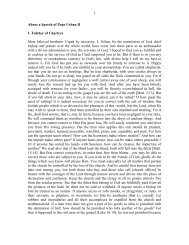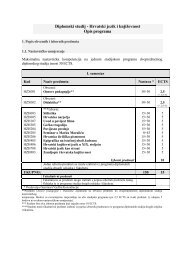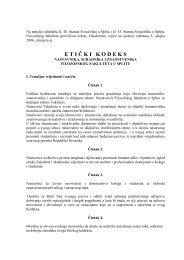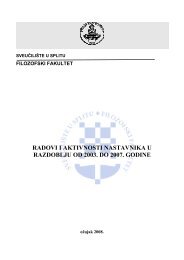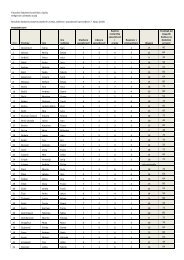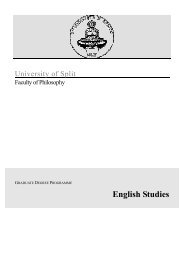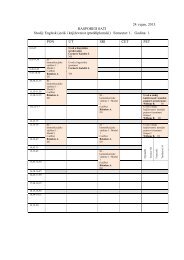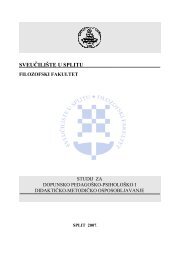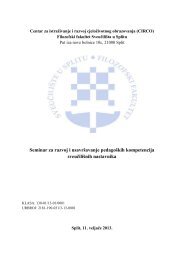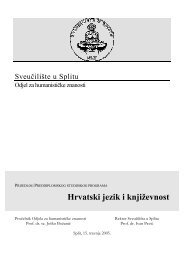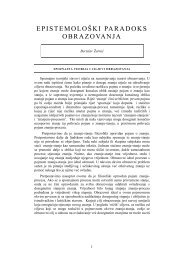Competency Based Education and Training
Competency Based Education and Training
Competency Based Education and Training
You also want an ePaper? Increase the reach of your titles
YUMPU automatically turns print PDFs into web optimized ePapers that Google loves.
Competence based education <strong>and</strong> training 11<br />
philosophical objections, (Smith, 1975; Broudy, 1981) <strong>and</strong> others who were more<br />
concerned with the pace rather than the direction of change (Swanchek <strong>and</strong> Campbell,<br />
1981; Spady, 1977). Apart from the threats to institutional autonomy <strong>and</strong> academic<br />
freedoms there were other, practical, issues to be faced, since the m<strong>and</strong>ating of CBET as<br />
a sole system for the education <strong>and</strong> training of teachers has profound implications for<br />
administration, resources <strong>and</strong> teaching methods.<br />
The rhetoric of CBET outpaced implementation in the early 1970s; it was an untried<br />
system, albeit with a rational appeal, but still unproven. There was little or no research<br />
evidence to show superiority over other forms of teacher preparation. A number of<br />
reviews of the existing research on the relationships between teacher behaviour <strong>and</strong> pupil<br />
performance showed little evidence of positive, causative links (Huff, 1976; Heath <strong>and</strong><br />
Neilson, 1974). The lack of a sound research base was, justifiably, seen as a serious<br />
drawback; though the same charge could have been made <strong>and</strong> upheld in regard to more<br />
conventional kinds of teacher training.<br />
Reactions against hasty m<strong>and</strong>ating <strong>and</strong> over-zealous promotion of CBET tended to<br />
slow down the pace of change. Legal suits (e.g., in the State of Texas) showed it to be<br />
unconstitutional to m<strong>and</strong>ate a single form of teacher education. States were therefore<br />
constrained to take a more consultative stance <strong>and</strong> to work with, <strong>and</strong> through, the<br />
universities <strong>and</strong> colleges to develop systems acceptable to administrators, politicians <strong>and</strong><br />
teacher educators. The reaction of HE institutions to the challenges posed by CBET was,<br />
of course, varied. But, with substantial federal <strong>and</strong> state funding available for research<br />
<strong>and</strong> development (<strong>and</strong> earmarked for CBET) many university <strong>and</strong> college departments<br />
embraced the concept <strong>and</strong> set about the redesign of programmes.<br />
The US Office of <strong>Education</strong> continued to support the promotion of CBET through a<br />
National Consortium of <strong>Competency</strong> <strong>Based</strong> <strong>Education</strong> Centres (Burke et al., 1975). The<br />
consortium did valuable work in coordinating activities across the nine major centres<br />
engaged in USOE funded development work <strong>and</strong> assisted the dissemination of the<br />
concept. Burke et al., note that ‘One of the continuing problems faced by institutions<br />
attempting to re-do their teacher education programmes in the direction of more<br />
competency based activities is the general lack of definition <strong>and</strong> criteria for just what<br />
constitutes a competency based teacher education programme’ (p. i). The National<br />
Consortium of CBE Centres therefore set out to develop a set of ‘Criteria for Describing<br />
<strong>and</strong> Assessing <strong>Competency</strong> <strong>Based</strong> Programmes’. These criteria still look surprisingly<br />
fresh in regard to current trends in the UK. They are potentially applicable across the<br />
fields of education <strong>and</strong> training so are reproduced in Figure 2.1 in a short format (the<br />
extended format includes an evaluation instrument based on the criteria).<br />
Figure 2.1 Criteria for Describing <strong>and</strong><br />
Assessing <strong>Competency</strong> <strong>Based</strong><br />
Programmes<br />
(Source—Burke et al., 1975)<br />
<strong>Competency</strong> Specifications<br />
1 Competences are based on an analysis of the professional role(s) <strong>and</strong>/or a theoretical<br />
formulation of professional responsibilities.



